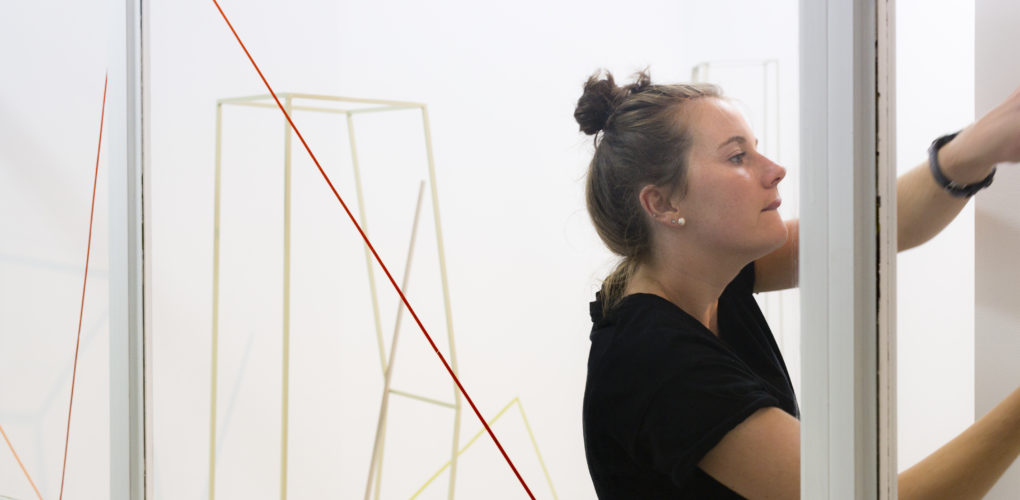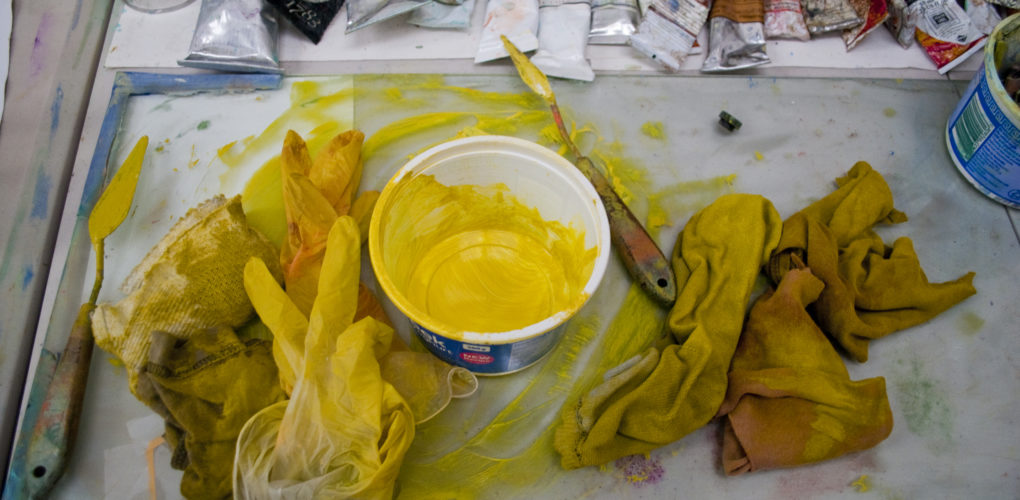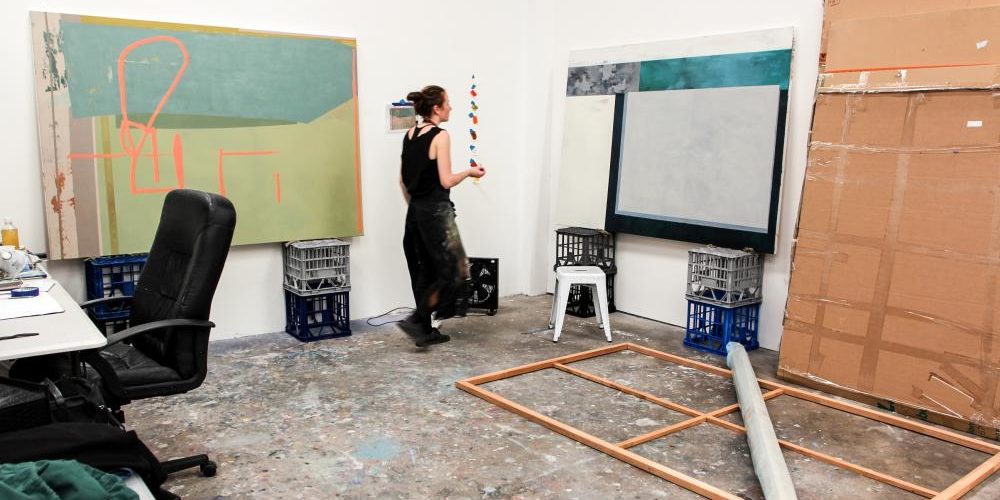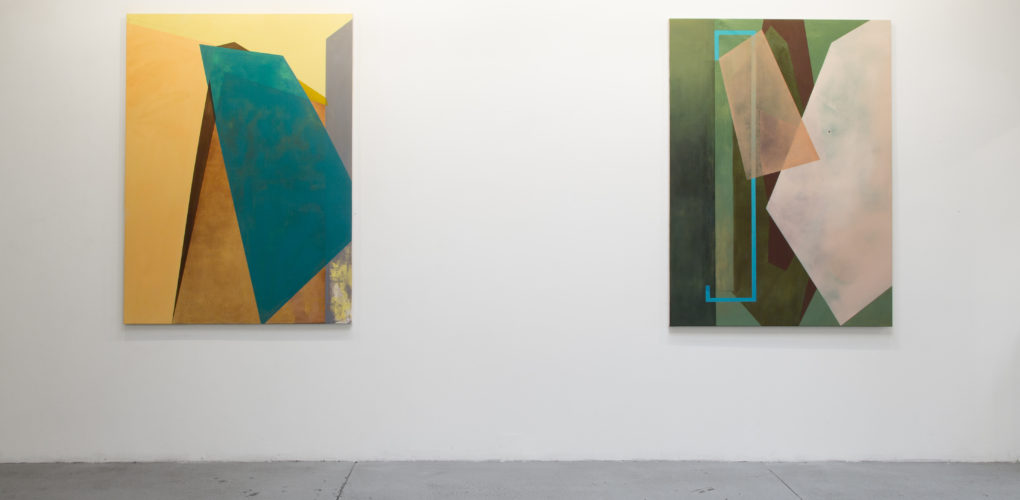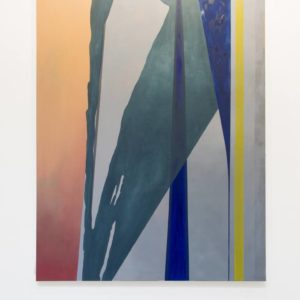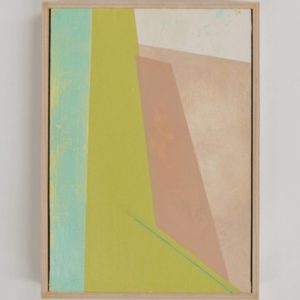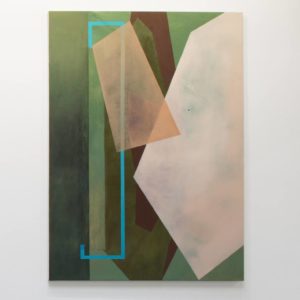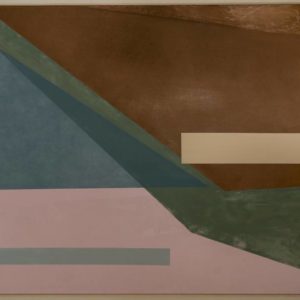One to Watch
 Caroline Collom encourages viewers to journey into her world of abstract layers, a land of illusionistic depth
Caroline Collom encourages viewers to journey into her world of abstract layers, a land of illusionistic depth
Caroline Collom’s abstracts invite us into the painting itself. Although she pulls inspiration for her geometric abstracts from the surrounding world, be it a wall, a textile pattern, or a color palette, Caroline dissects these tangible objects into a series of intersecting planes and overlapping forms. Playing with spatiality and painting techniques to add an illusion of depth — she works with oil and often reworks parts of the canvas with a dry brush to add some more depth–she aims to mimic the viewer’s experience as they lean closer and step back to get a sense of the work.
Caroline is a British artist living and working between the UK and Australia. She studied at Wimbledon College of Art, UAL and received a BFA at the Victorian College of Arts, University of Melbourne. Caroline was featured in FreshPaintMagazine International Issue 13 in June 2016. She has exhibited her works in solo and group exhibitions in Australia, most recently at The Other Art Fair Melbourne and Collab Gallery in Chippendale, Australia.
What are the major themes you pursue in your work?
Painting is at the forefront of my abstract practice. I take inspiration from what is already around me; whether that be a building, a wall, textiles and general color palettes. I paint numerous layers of oil paint in different forms and then I go back and dry brush certain areas to create an illusion of depth in that area. I hope to expose an inward and an outward trajectory of multiple forms through intersecting planes. The planes reveal subtle differences in the illusion of depth within the work that are not always evident on first viewing. The variation of depth is intended in getting the viewer to move in and out of the work and look for the details creating a physical engagement. Naturally, abstraction can make each viewer perceive different ideas but I also intend my work to take the viewer on a journey into them passing through the different hues and textures along the way.
How did you first get interested in your medium, and what draws you to it specifically?
My love for oil paint started from the first time I painted as a teen and has been my preferred medium ever since. There is something very enticing about the texture on a brush as you guide it across a surface. I wholeheartedly believe that other mediums can’t attain the same richness in color as oil paint on canvas. Color is at the core of my practice and without oil paint I would not be able to create the nuances in color and depth that I seek in all my pieces. The nature of oil paint allows me to layer up but also remove certain areas off without impacting the underlying layers.
How has your style and practice changed over the years?
I started art school with a love for figurative painting but never knew why until getting asked why I had painted people. After spending time deliberating the question, I came to the conclusion that my love of figuration stemmed from my love of skin and the complex imperfections of the human form. Deconstructing the works completely, I saw the whole body not as a nude, but as forms and shapes of different tones. In hindsight, I realized that I have always seen abstractly but had never allowed that be the painting itself. Whilst concentrating fully on an abstract practice, I continue to re-evaluate what I am painting and pull back the tones and shapes. I am still learning what my practice is and I will continue to push the nature of paint on canvas.
Can you walk us through your process? Do you begin with a sketch, or do you just jump in? How long do you spend on one work? How do you know when it is finished?
I take a lot of photos of color palettes, buildings, and compositions that attract me and I then continue to look at them over the course of many days to see what parts I am attracted to. I print these photos off and start sketching out possible paintings. I always draw a canvas shape in my sketch book so I am scaling the work accordingly and I use coloring pencils and pens to create my layers and tones. I do about 4 of these drawings before I look over each one to decide which one works best. I write notes around the sketch so I know what I am doing in that area. I paint for a minimum of about a month on each painting but this really does vary and I am always painting numerous paintings at once. After spending time on a painting, building up a relationship, it can be hard to describe the knowing when a piece is complete. When I struggle to conceive another addition to the piece and making one feels forced, I know that I am nearly finished.
What are some of your favorite experiences as an artist?
That feeling you get when you can see a painting coming together; the ability to be mentally and physically pulled towards and into a piece, all the while escaping the temporariness of time. When my concepts are viewed by others, the viewers are able to use descriptives that I’ve envisaged whilst painting: to have what I wish to portray be seen.
If you could only have one piece of art in your life, what would it be?
Wow! That is a hard one but I would have to say Rothko’s No.17. All I would need is a comfy chair in front of it and all my evenings would be complete. There is so much depth and a literal void to look through and into for a countless number of hours. The color and application gives the painting a pulsating quality, which keeps you endlessly going to new places within the painting and beyond.
